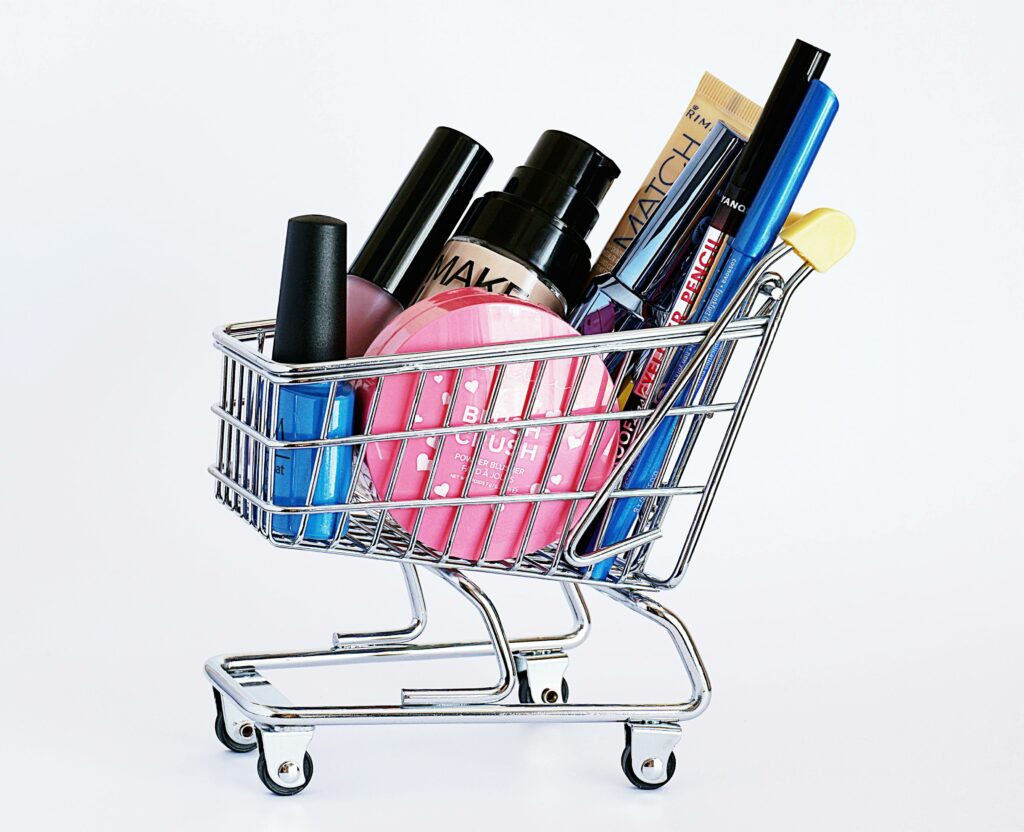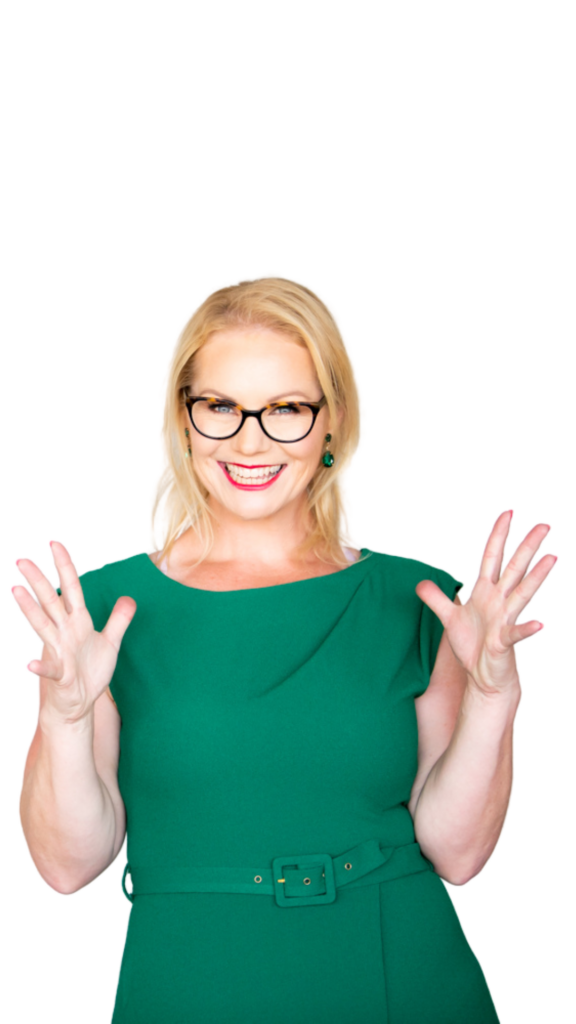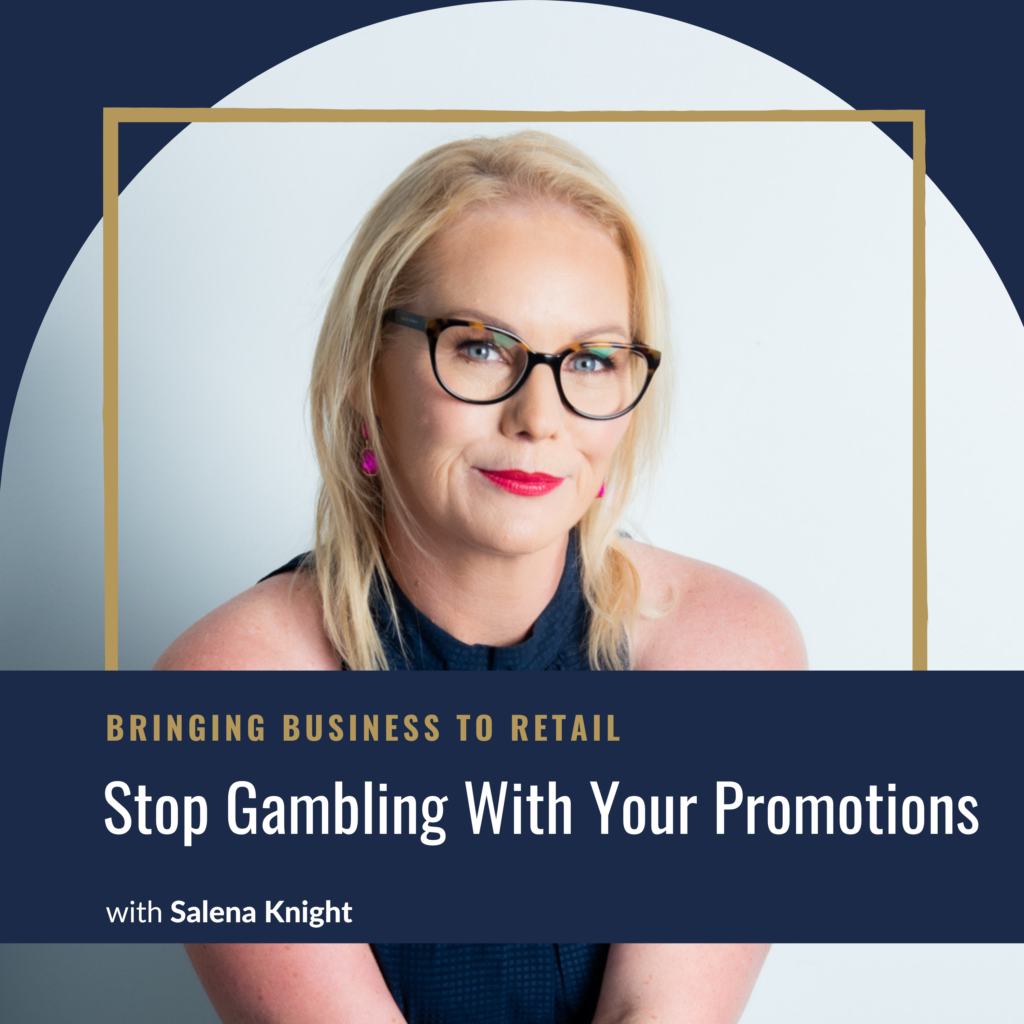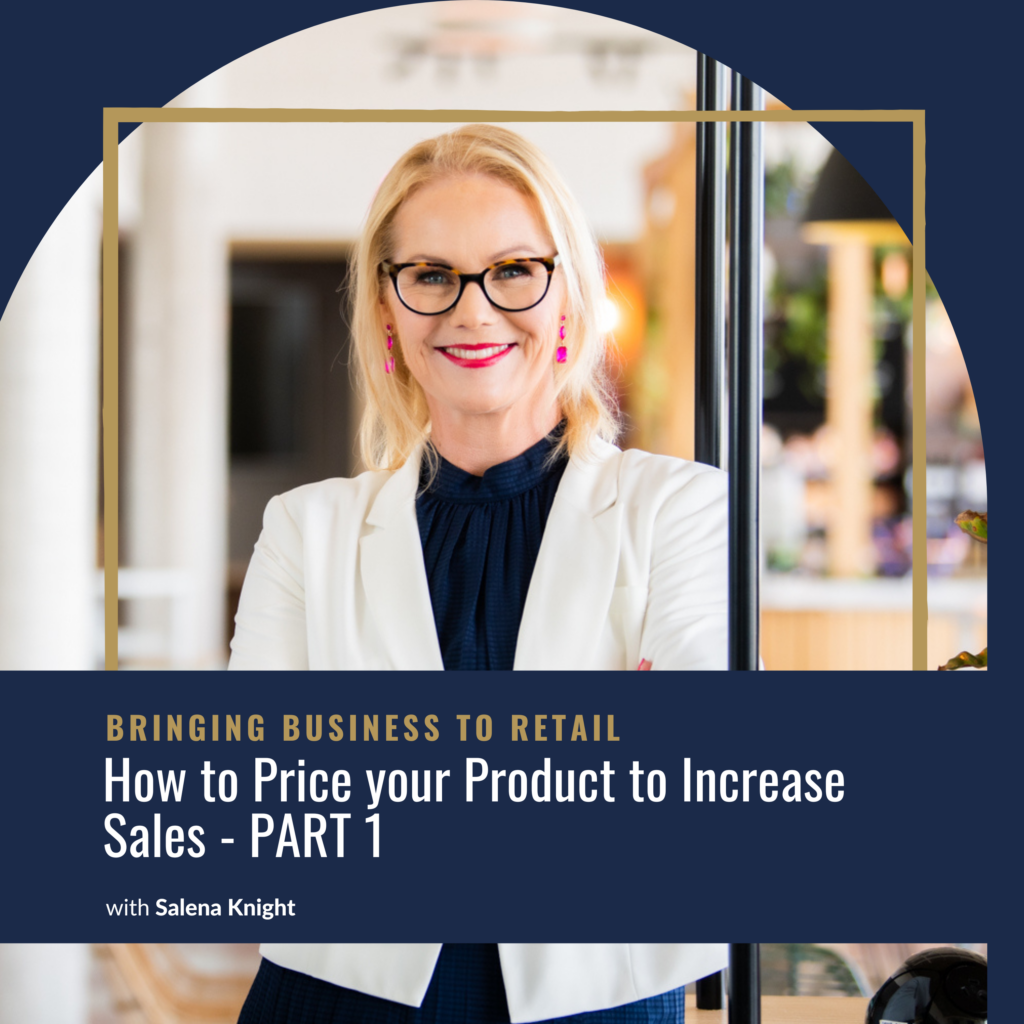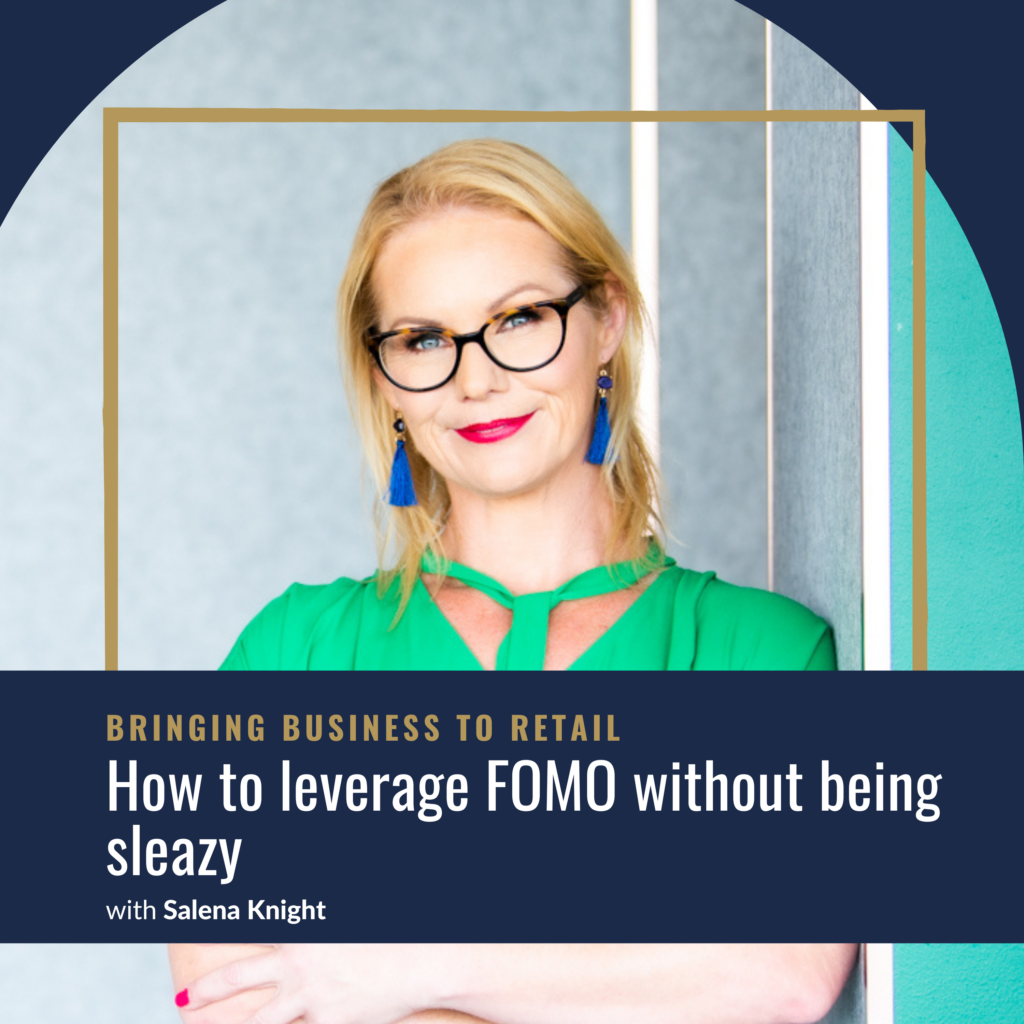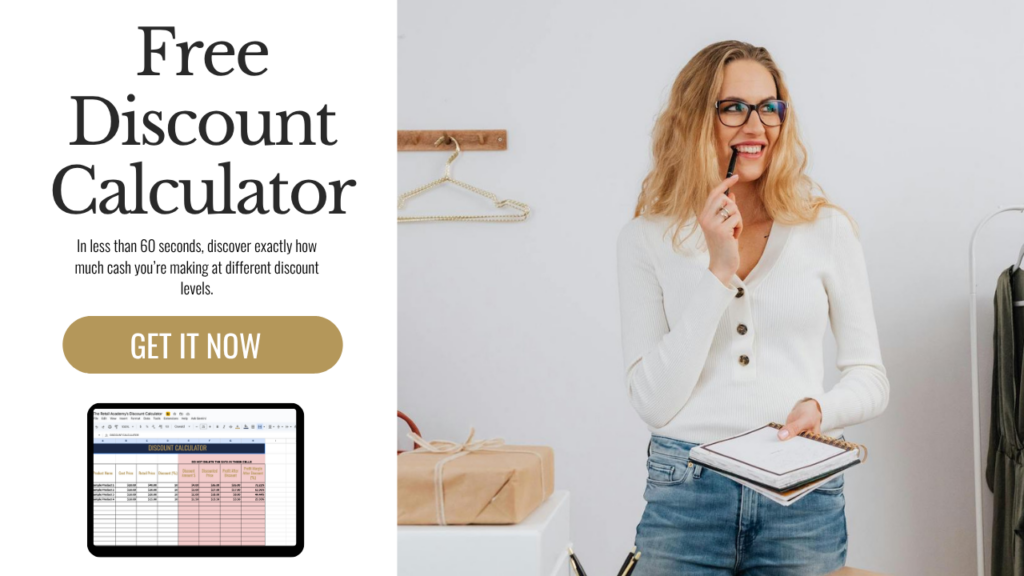
How would you feel, if you knew you had everything you needed, to make this your most successful quarter ever?
Everything that you need for a prosperous peak season.
Well, grab your notebook and pen, because that’s exactly what I’m going to share with you on this episode.
For many retail & e-commerce stores, up to 70% of their annual revenue will come in between mid-Sept and mid-Jan.
Let’s just put that into perspective.
In just 4 months, you’ll make MORE than the rest of the year combined!
Now whether or not the bulk of your revenue comes in Q4 or some other peak period, I want to give you my BLUEPRINT to leverage the peak season and make it the most successful ever.
Make sure you’ve got a pen and paper ready, and hit SAVE on this episode because you’re getting a mini masterclass!
———-
Leveraging Q4 for retail success with a focus on setting revenue goals and breaking them down into manageable sections. 0:03
Inventory management for small businesses. 5:39
Holiday marketing strategies for small businesses. 11:29
Holiday marketing strategies for e-commerce businesses. 17:05
Planning for holiday season sales, including packaging, staffing, marketing, and KPIs. 22:28
Q4 success strategies for e-commerce businesses, including data analysis, website optimization, and technology management. 27:20
Planning for a successful Q4 holiday season. 31:53
LISTEN NOW on The Bringing Business To Retail Podcast
0:00:03 - (Salena Knight): Hey there, and welcome to the bringing business to retail podcast. If you're looking to get more sales, more customers, master your marketing, and ultimately take control of your retail or e commerce business, then you're in the right place. I'm Selena Knight, a retail growth strategist and multi award winning store owner whose superpower is uncovering exactly what your business requires to move to the next level.
0:00:33 - (Salena Knight): I'll provide you with the strategies, the tools, and the insight you need to scale your store. All you need to do is take action. Ready to get started?
0:00:52 - (Salena Knight): How would you feel if you knew that you had everything that you need to make this your most successful holiday period ever? Everything that you need for a prosperous peak season? Well, grab your notebook and pen, because that is exactly what I am going to share with you on today's episode. Today's episode continues my series about how to leverage Q four. Whether it is leveraging email, leveraging yourself as a leader, creating offers that your customers want to buy, and how to make sure that your promotions don't end up flopping.
0:01:25 - (Salena Knight): Now, this is really important because for many of you, up to three quarters of your annual revenue will come in between that mid September to mid January period. So let's just put that into perspective. In just four months, quite a lot of you are going to make more than the whole rest of the year combined. So whether Q four is your peak season or not, I want to give you my success blueprint so that you can leverage the peak season whenever that is for you and make it your most successful ever. Now, you might be wondering why I am doing a podcast about the Christmas trade so early.
0:02:04 - (Salena Knight): Well, quite simply, by the time you get all of what I'm about to share with you organized, we will be well and truly into that peak season. And there are no do overs, my friend. So in order for you to maximize your revenue, which is really important right now, because times are tough, customers are very discerning about where they're spending their money, I'm going to walk you through my complete blueprint, which covers the three key areas in your business, trade, team and tech.
0:02:37 - (Salena Knight): So if you haven't already got a notebook, make sure you do, because this is going to be one of those episodes that you want to click into and press save because you're going to go over it again and again and again. And every time you do, you will get more nuggets of juicy business goodness. So let's jump in and walk through how to leverage each of those areas for Q four success. The first one is trade.
0:03:00 - (Salena Knight): Now, as the name suggests, this is all about what you need to do to trade successfully and profitably. Now, there are three subcategories to the trade section, and I'll call them a, b and c, just so it doesn't get confusing. So part one is trade, and then we'll have the subcategories that go underneath a, B and c. So part a, part a, is that how you say it? Part a is targets. What are you going to sell and how much of it do you need?
0:03:36 - (Salena Knight): Before we even get to that point, we have to reverse engineer everything, because before we even get into what products we're going to be buying and how many of everything we have to look at what Q four is going to look like for your business. And we cannot skip this step because honestly, this step is the most important, this is the most crucial part of your blueprint. And as we walk through, you will see why.
0:04:05 - (Salena Knight): Now, for most of you, you're probably going to start with a revenue goal. How much money do you want to make in that time? And we're going to break it down into little sections as we go along. The reason that we're doing this is because if you have that end goal, we can then break it down. We can break it down into months, we can break it down into weeks, we can break it down into days. We can break it down into different promotions.
0:04:33 - (Salena Knight): And when you have all of that, which is what we're going to walk through, that is going to be the key to determining everything in your business. Your product assortment, your inventory budgets, how much marketing you're going to need to undertake to hit your goals and what that marketing budget should look like. How many people are you going to need to fulfill the inventory, to fulfill the shipping, the packaging to man your store, to do your marketing.
0:04:58 - (Salena Knight): All of that hinges on how much money do you want to make or what is your goal. And for most of you, that is going to be a revenue goal, because you can't just cross your fingers and pluck a number out of the air and crossing your fingers and hoping that you have a good quarter. Well, I ask you, what does that look like? What is a good quarter to you? There's got to be some kind of number attached to that. And if you'll just let me tell you a little bit of a story about how this can all go wrong if you don't understand the limitations and if you don't have that end goal, or if that end goal can't be reverse engineered in time.
0:05:39 - (Salena Knight): So I'll tell you the story about Rhys Reese has a beautiful skincare line and her dream was to be stocked in a very well known us department store. She had put years, or she has put years into all of the work, creating the perfect formula. The branding is beautiful, the packaging is spot on. And as we worked through, I was so supportive of this goal. I thought it would be fantastic if she got into this store.
0:06:09 - (Salena Knight): But then I asked her a key question, which was, if she was successful, could she meet the Moq, the minimum order quantities for this retailer? Because I knew that in Q four, that number was around 10,000 units. And I also knew that that was not attainable for Reese. And when I asked her that question, she said no. So, as you can imagine, when you are working with a potential stockist, they need to know that you can fulfill their demand.
0:06:41 - (Salena Knight): They don't want to be losing money because you can't manufacture or you can't deliver the product quick enough. They're going to be spending money on promotions, they're going to have merchandising in their stores, and if you don't have the product, they will lose money and quite often they will penalize you if that happens. So whilst Reese's goals were great, and I was so supportive of them, the simple fact was she didn't have the trade, the tech or the team or the finances to be able to hit those targets. So they were completely unrealistic.
0:07:14 - (Salena Knight): Given the timeframe that she had and her finances, she was just setting herself up to fail. So learn from Reese's mistakes. Set yourself up for success, not failure. But does this mean that I think you should do away with big goals? No, no, no, no, no. Inside of our five x framework and inside of scale, your store, we make a very concerted effort to have goals and stretch goals, because when you have that big goal, you know what ends up happening.
0:07:46 - (Salena Knight): You nearly always surpass the regular old goal. And if you don't have that stretch goal, if you don't have that big goal, it actually makes you think a lot smaller. And so what I want to do through this blueprint is give you the steps so that you're not caught out like Reese. So the great thing is, Reese was able to get ready for the next year when she knew how, when she had all the data, she was able to reverse engineer when she would need her branding done by, when she would need her packaging imported by.
0:08:18 - (Salena Knight): She was able to negotiate rates with her supplies. We're going to get onto all of that and how it works for you. Doesn't matter if you make your own product or not. Once you have forecasted your revenue, let's jump into what's next. So trade is broken down into those three subcategories. We've already gone over part a, which was having a target. The next part, quite obviously, is your inventory. So what is that going to look like for your business? You're going to reverse engineer how much inventory you need to hit the targets that you've put in place for those different promotions, for different weeks, for different months.
0:08:54 - (Salena Knight): And one of the simplest ways that you can do that is by looking at your stock in terms of their grade. So most POS systems and websites will actually grade your stock. There's a thing called ABC analysis. If you are inside of our five X framework or scale your store, we just did a lesson on this and so we walk through how that works. But if you don't, you can google it and you can see how you can use stock grading to identify which areas of your business you have a grade inventory. So that is the top 20% of your products that bring in 80% of your revenue. And then you have your b grade inventory, which is the next 30%, but it only brings in 15% of your revenue.
0:09:36 - (Salena Knight): And then there's your c grade, which is the bottom 50%, which only brings in 5% of your revenue. Thinking about those numbers, if 50% of your stock only brings in 5% of your money, you don't want to buy any more of that. So as you're thinking through these promotions, looking at your a grade stock and your b grade stock, they're the kinds of items that your customers want to buy. So when it comes to inventory management, stock grading is right up there at the top of the list.
0:10:05 - (Salena Knight): Also, look at things like your sell through rate. How quickly are you selling products? Look at your historical data. So last year, you might have sold a lot more napkins in the lead up to Christmas because people are putting out their holiday table. Maybe you don't sell napkins anywhere near as much during the rest of the year, so analyzing your sell through rate will help you to forecast your inventory. When we're doing our forecasting, you might have inventory management software that does this for you. And if you do, that is fantastic.
0:10:38 - (Salena Knight): You get a gold star. But if you don't, you'll be looking at things like reviewing your historical data and then using that to forecast demand. Looking at things like trends, like what is trending on TikTok right now. What are people searching for keywords, all those kinds of things will help you forecast the kinds of products that you're going to put into your promotions and the amount of each of those products you're going to need to have. Of course, when we're ordering stock, we have this dilemma of we need to pay for it before we get it. Hopefully you are on trade terms for many of your suppliers. But if you have had to indent order or if you have to buy up, if you have to pay upfront, what we call a pro forma invoice, then make sure that you forecast your cash flow as well and place those orders as you need them. For me, I always like to send my suppliers.
0:11:34 - (Salena Knight): If I am ordering a lot of stock, I will send my suppliers my expected purchase orders over September, October, November, December and January. Now, there's no guarantee that they will put that stock aside for you, but if you are a regular buyer, it helps them to forecast their inventory as well. And the good thing is, if they know how much you need and the numbers start to run low, hopefully they'll be giving you a call and saying, hey, we're getting low on this product.
0:12:05 - (Salena Knight): Do you want to buy what's left? So, looking at all of those things, but not forgetting impulse buyers. So Christmas is filled with time. The time for us to just buy things on impulse buy those stocking stuffers, buy those Kris King Kringle gifts, things that may not sell during the rest of the year can sell during that holiday period. And if Christmas isn't your holiday period, maybe you are a store in a town where snow season is the biggest time.
0:12:39 - (Salena Knight): And I know for you in the northern hemisphere, that's Christmas. But for us in the southern hemisphere, that is not Christmas. But maybe something like impulse buyers might be the little hand warmers that you crack open. You keep them in your pocket and you crack them open to keep your hand hands warm. Those kinds of things are going to make you more money. So when you're looking at your inventory, when you're doing your inventory planning, what are the impulse buys that you are going to have to make sure that you are maximizing?
0:13:05 - (Salena Knight): Q four. All right, so we are still in the first part of the blueprint trade. We've got our targets, we've got our inventory management sorted out. And now it is time to look at how we're going to get people to know that you exist and want what you sell. Yes, the marketing pillar. The marketing pillar is part c of the trade section. So when it comes to your marketing and promotions, what we're doing now is planning out our holiday campaigns right now. I spent way too long flying by the seat of my pants and doing everything ad hoc.
0:13:44 - (Salena Knight): We were a really deadline driven company. But the problem I had was that deadline. Everything was left until the last minute. And when everything is left until the last minute, I can guarantee you you don't get the best results. Everyone is stressed out. It's probably going to cost you money. In fact, I will guarantee it will cost you money in the long run, either because you are not maximizing a promotion or you run out of inventory or you forget to run the ads or you maybe just send one email. When you are running to a deadline that tight and leaving everything to the last minute, you lose money.
0:14:20 - (Salena Knight): Plus you stress everyone out. And if you are working with outside agencies, maybe you've got a social media agency, maybe you've got a paid ads agency. They're going to be wanting this information. What are the promotions that you're going to be running and when they're going to want that information in the next couple of weeks so that they can plan, so that they can do their job. They can analyze keywords, they can analyze trends, they can help you reverse engineer a marketing budget and so you can see how important reverse engineering is.
0:14:54 - (Salena Knight): How much are we going to make breaking that all down? So once we have those promotions in place, I would love you to prepare your email marketing strategy. Honestly, emails take time. If you work with our promo run sheet, then I think there are about 17 emails that go out for something as simple as a product launch or a simple sale. So when you think about if you're running ten promotions in that time and each one of those is 17 emails, that's 170 emails that need to be written. My friend, that is a lot.
0:15:33 - (Salena Knight): You do not want to be leaving this to the last minute. If you can map it out now, you can start getting those emails sorted. Now. The next thing, speaking of, maybe you're doing email marketing in house. Maybe you're working with an agency. But I mentioned agencies before and this is the perfect time to take your plan to them and work with your media buyers to map out your marketing strategy. Now, if you are not familiar with the term full funnel, let me give you the really, really quick breakdown. The ten second breakdown.
0:16:04 - (Salena Knight): There is top of funnel, people who don't even know that you exist. There is middle of funnel. That is people who have an idea of who you are, they're waiting to buy. And then there is bottom of funnel. Those are the people who are converting. Now, most people will run what we call bottom of funnel ads. They're conversion ads. I like to call them buy my stuff ads. So you're putting a product out there and you are hoping that someone buys. But in this time you have a Runway and we'll talk about that. But you have a Runway to be leveraging top of funnel, just putting your stuff out there. And that stuff is way cheaper than a conversion ad.
0:16:43 - (Salena Knight): Then you have your middle of funnel. So your marketing agency, your paid ads agency, needs to work backwards themselves. If you can give them this data, they can map all that out and they can help you build out a budget because you do not want to be spending money just on conversion ads because all that is going to do is cost you a fortune. So using those different stages of the funnel will keep your budget down and maximize your conversions.
0:17:12 - (Salena Knight): So with that said, it doesn't matter who's doing your ads, but you will need to have your copy and your creatives ready to go. Now, that might mean that you have a promotion planned for November, but the stock hasn't arrived yet. So speak to your suppliers and work out. When are you going to have access to images? When are you going to have access to product descriptions? Because you need all of this information to put into your promotional strategy. And if you have a retail store, if you have a physical store, what kind of events are you going to be running?
0:17:44 - (Salena Knight): Events take time. Maybe you'll be doing a collaboration with influencers. All of these things for you to maximize the amount of money that you get your return on investment, you need to put the time and effort into them, which is why you need to be starting your holiday promotions. Now. If you want Q four to make you that kind of money that you have put down in your big goal, you need to start now.
0:18:12 - (Salena Knight): Just quickly. As an aside, if you do have a physical store, some of the things that I have been caught out with in the past is not rearranging my store to cater for the holidays. And so that means things like holiday displays. What are you going to put as people walk in? And it might mean you need to move, move tables, you need to move racks, you need to change out the way your window gets, your window gets hung, for example. So think about that stuff now and plan for traffic flow.
0:18:41 - (Salena Knight): So there's a pretty good chance that you, well, hopefully, fingers crossed, you are going to have longer queues because more people are coming in because you are getting your products out there. So longer queues mean people are going to be waiting. Do you need to have a longer set of pos upsells, a longer set of tables, for example, with those impulse buyers. Big businesses do this well. If you go into any fashion store I know here and in America, places like, you know, cotton on and Macy's, you have to. It's going like going to Ikea when you get to the cash register.
0:19:11 - (Salena Knight): But every single step you take, there is something for you to buy in that really low price point. So think about that as you are planning out this promotion. So that is the trade section. We are one third of the way through this blueprint. Stick with me. I promise. Grab a drink, grab your notebook. Make sure you are copiously taking notes. Because trade we covered off marketing, and before that, we covered off your inventory management.
0:19:38 - (Salena Knight): And then we started off with targets. It all starts with the targets. Let's realign ourselves for part two. Now, part two is team. You can't do this alone. I'm sorry, but superheroes only, you know, only are in comic books. Whether you are outsourcing to agencies, which we've talked about, or maybe you're using three PL or you have contractors who come in and work for you, or even if your team are all in house, you will need more resources to make the peak period as successful as possible.
0:20:14 - (Salena Knight): So let's look at that first area in the team section, which I'm not studying with necessarily people, which is probably where you thought I was going to be. I'm going to start with fulfillment. So moving into the peak time bricks and mortar stores, you're going to be posting out orders. Pure play, ecOm. You're going to be posting out orders. Now is the perfect time for you to go and negotiate rates with your carriers because you're going to see an upswing in orders in your peak time. So use this opportunity, use that forecasting that you've done.
0:20:47 - (Salena Knight): Use this time to negotiate. And if you are using something like three Pl, use this time to give them your potential forecast so that they know how many people they need to have on. I mean, everybody's going to hire more people for Christmas, but if you know that you go from 10,000 orders a month to 50 over Black Friday, make sure you tell them. And when it comes to fulfillment, no cutoff times. Know the cutoff times for when the last parcels need to be sent in order to get where they're going, whether it is international or domestic, know the cutoff times that your three Pl has for products to arrive in the webhouse.
0:21:30 - (Salena Knight): All of these need to be diarised into your plan and make sure you communicate them. Make sure you communicate them to whoever is doing your product buying. Make sure you communicate it to your team who are fulfilling these orders. Make sure you tell your ecom team to put banners on the website because if you aren't telling people, trust me, I'm the kind of person who buys at the last minute and by the last minute I mean, you know, in December.
0:21:58 - (Salena Knight): And so if you don't offer express post shipping, I will just go to somebody else who does. And so you might offer express shipping, but if I can't see that when I come to your website, I'm not going to waste my time clicking into the shipping section or adding things to my cart, getting all the way to the end only to find out that you don't. I'm just going to go to the first place that has what I want in stock and can get it to me by when I want it. The communication part of cutoff times.
0:22:26 - (Salena Knight): Super important. Make sure you have enough packaging materials. This has happened to me. Yes, I do remember one Christmas when we ran out of packaging tissue paper and it was so difficult to find pictures. I remember having to travel an hour and a half to a wholesale stockist to buy a great big pack of tissue paper. Do not be like Sal and that time make sure you have all of the packaging materials that you need and have a process in place for your team to process orders. Now if you're using three pl, they're going to tell you what those cutoffs are and what the KPI's are.
0:23:07 - (Salena Knight): But if you have an in house team who are packing, I like to have a process and I like to put KPI's in place. I want every package to be picked within 2 hours. I want every parcel shipped out within 24 or 48 hours and parcels get packed like this. Processes are just going to make your life so much easier. So speaking of people, let's come back to people because you will need people thinking about this plan that you're going to have mapped out and reverse engineering.
0:23:39 - (Salena Knight): Who are you going to need? Who are those extra people? Who are those seasonal staff that you have to bring in and how long does it take you to train them? Do you need to go and build out some training manuals so that everybody's on the same page and then reverse engineer that to when do you need to put the jobs at job ads out and when do you need to hire now personally for things like seasonal staff. In fact, for all jobs, I like to do group interviews so map this out.
0:24:08 - (Salena Knight): Are you going to be doing a group interview and then group training? And if you're watching the video, Sal says yes. If you need more than, say, two people, you should be doing group interviews and group training. You do not have time in the peak season to be training people one on one. With all this influx of people and the influx of orders and the influx of customers, this is the perfect time for you right now to be updating your frequently asked questions, making sure that those shippings and returns policies are updated because you might offer extended returns or extended exchanges over this period of time because people are buying gifts. Be prepared for an influx of customer inquiries. Now, personally, I like to use software like gorgeous, but maybe you might want to put AI chat in or even a live chat. Remember, if we're doing something like live chat, going to have KPI's and processes in place for that as well. Now, in terms of how your team are going to be facilitating that customer experience, is there going to be any promotions around loyalty or rewards programs? Because if you are, you'll need to plan that into your promotion, but make sure that your team are communicating this. But you're probably also going to be needing to get printing done or, you know, posters or flyers, all those kinds of things.
0:25:26 - (Salena Knight): And you can see now why I'm giving you this information because, like, so far ahead of time, because for you to make the most amount of money, you will need to put in the effort. And every single promotion that you're going to run is going to require planning. It's going to need to perform for you through all of this. If I cannot say three letters, enough through every single one of these episodes, please have clear KPI's. If it's an apostrophe s, is that still three letters? I feel like it is. So please have clear KPI's for when your stock needs to be uploaded by the website.
0:26:05 - (Salena Knight): When does your marketing need to be started? What kind of return do we need to get? All of this is the CEO's job and that's you. And you might be feeling overwhelmed right now, and you're like, sal, I can't do all of these things. I would rather that you had this information and you had the time to plan and you did it as best you could and you brought in the resources and you planned for that additional spend you might have to have rather than getting to the end of this quarter and feeling like you could have done things differently. If you have this blueprint, at least you are armed with the knowledge.
0:26:42 - (Salena Knight): And if you have the clarity, and the clarity all comes from even just knowing that this needs to be done. But if you are clear in where you are heading, it will mean that you are confident in the decisions that you make. Clarity gives you confidence. And when you are confident in the decisions that you are making, you will be in control of your business. Because if you feel like your business is controlling you, quite often it all goes back in a big circle to clarity.
0:27:11 - (Salena Knight): You don't know where you're headed. You don't know what you want. You don't know. Clarity gives you confidence, which puts you back in control. All right, so, so far we have covered the targets, the inventory, the marketing, promotions, inside of trade and in team. We have made sure that we can fulfill our orders both in house and outsourced, and that we have the people that we need to be primed and ready to make sure that everything is fulfilled and everything that we forecasted can come to fruition.
0:27:43 - (Salena Knight): That was a lot of f's in that sentence. All right, the next and third and final part of my success. Blueprint. So we had trade, we had team. Now we have technology. Ah, technology. I was not having a good technology day yesterday. The batteries in my microphone ran out. I forgot to press record on one of the videos that I did and I spent 20 minutes recording a podcast only to find there was no video.
0:28:08 - (Salena Knight): Yesterday was not my day. Technology can make our life so much easier, but it can also feel like a huge struggle to keep up when it goes wrong. I felt like yesterday I just had to write the whole day off. It feels like when technology goes wrong, it goes very, very wrong. So here is my checklist for a successful q four when it comes to technology. And the first part is starting with your data and analytics. Now, I am a firm believer that pretty much all the answers are found in the numbers.
0:28:42 - (Salena Knight): So set up tracking for your holiday KPI's. Make sure that is happening across your social media posts, across your paid, across your email. Put tagging in place. If you don't understand how to use things like Google UTM tags, spend an hour watching a YouTube video so that you know that you can attribute the sales over this time to different campaigns. You want to know if your traffic is coming from TikTok. You want to know if your traffic is coming from a particular Google Ad. Because the more we know, the more we can replicate as we move forward and we do more of what works and less of what doesn't. Put your website through a stress test.
0:29:23 - (Salena Knight): I can't tell you how many times I have seen people complaining that this quite often happens in Black Friday. People complaining that they tried to order and the website just went down. It seems like this happens a lot for concert tickets. Have you ever had this problem? I know I certainly have. I have gone to buy concert tickets and you just get the spinning wheel of death. If you're doing all of these things that we're talking about, there's a really good chance that you are going to have a huge influx of traffic to your website.
0:29:54 - (Salena Knight): So make sure it works. Make sure it is optimized for mobile. Make sure that all your pictures are optimized for fast loading times. Make sure you're looking at things like your bounce rate on a regular basis to make sure people are going to the right places. I like to, especially for my website is, and this is something people don't talk about a lot, but making sure that people can opt in for a gift receipt. Now, gift receipts will show you that it was purchased, but it doesn't have the price.
0:30:24 - (Salena Knight): Now that is one of my most favorite things. I want to be able to know that if something goes wrong or, you know, the color is not right or the size isn't right, that the recipient, the person I put all this effort into to buy the perfect product, can swap it out if they need to. So if you don't have things like gift receipts or wish lists or registries or back in stock notifications, now is the time to think about that customer experience and put those things in place in your website so that you have them for Q four.
0:30:54 - (Salena Knight): Lastly, again, something that people don't think about quite often. If you have a retail store looking at your pos and how are you going to do things like bulk uploads? Because you're going to be getting a lot of stock in and you want that product inside of your pos as early as possible. It's going to say the minute it hits the shelves, but actually, if you can have it in your pos before it hits the shelves, you can pre sell it. So you might need to be using things like purchase orders so that your team and you can see when stock is supposed to arrive and how much of that stock is supposed to arrive.
0:31:28 - (Salena Knight): How are you going to do things like bulk uploads and bulk pricing changes? As we go into these promotion, promotion, promotion campaigns, you don't want somebody sitting there clicking 400 different products and changing the prices. Have a process in place so that whoever is managing this can get it done on time. Now, I don't know about you, but that was a lot. It took me a lot of time to sit down and work through all of those things and put them down on paper. So we've covered a lot of ground for my Q four success blueprint. We focused on trade, we focused on team, and we focused on technology.
0:32:07 - (Salena Knight): So what I probably would like to do now, because it is a little bit overwhelming, is maybe just wrap this all up with a bit of a TLDR. Too long didn't read. So if you're skipping to the end, here is my TLDR. Do not wait until September to begin your Q four planning. The time to act is right now. As soon as you finish listening to this podcast, start off by setting clear targets. Define your revenue goals and work backwards to determine what you need in terms of inventory, in terms of marketing, in terms of resources and fulfillment.
0:32:41 - (Salena Knight): Look at your inventory, grade your stock, analyze the historical data, put those orders in early and forecast those orders to make sure that you are not missing out on inventory. Plan your marketing outline your holiday campaigns. Prepare your email marketing strategy collaborate with your media buyers on a full funnel approach and a budget and prepare your team. Hire and train your seasonal staff. Update your policies.
0:33:07 - (Salena Knight): Ensure everyone is aligned with those Q four goals and KPI's and then optimize your tech stress test your website, put the proper tracking in place and make sure that your systems can handle the increased traffic and sales and then putting all this together and creating a timeline. Map out the key dates and deadlines for each aspect of your Q four strategy. Last but definitely not least, please stay flexible.
0:33:36 - (Salena Knight): Because even though we can plan everything out to the nth degree, things happen. There are changes in the market, some random product goes viral on TikTok, be prepared. Facebook or Instagram goes down or your email server decides to blacklist you and you can't get those emails out. Be flexible. Know that there will be changes and there will be challenges. You just need to know that you have your plan and you are monitoring everything so that you can adapt when necessary. Remember, a successful Q four doesn't happen by chance.
0:34:12 - (Salena Knight): It's the result of careful planning and strategic decision making and proactive execution. And by following my blueprint and taking action right now, you are setting yourself up for the most profitable holiday season yet. Don't let this just be another podcast that you listen to and think. Yeah, that's good. Good advice there, Sal. Save this episode. Take your calendar out right now. Block off some time this week to start working on your Q four strategy. You my friend, are not going to get this done in a day.
0:34:44 - (Salena Knight): This is weeks worth of work. You need to collaborate with other people. Trust me, if you do this, your future self and your bank account and your customers will thank you. And when you are celebrating a record breaking sales quarter in January, feel free to send me a DM and let me know that this blueprint was the thing that got you there. Alrighty, thank you so much for tuning in and here's to your cue for success.
0:35:13 - (Salena Knight): So that's a wrap.
0:35:15 - (Salena Knight): I'd love to hear what insight you've gotten from this episode and how you're going to put it into action. If you're a social kind of person, follow me heseling a night and make sure to leave a comment and let me know. And if this episode made you think a little bit differently or gave you some inspiration, or perhaps gave you the kick that you needed to take action, then please take a couple of minutes to leave me a review on your platform of choice.
0:35:44 - (Salena Knight): Because the more reviews the show gets.
0:35:46 - (Salena Knight): The more independent retail and e commerce stores just like yours that we can help to scale. And when that happens, it's a win for you, a win for your community, and a win for your customers. I'll see you on the next episode.
Share this episode
Watch The Video


